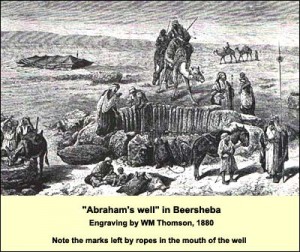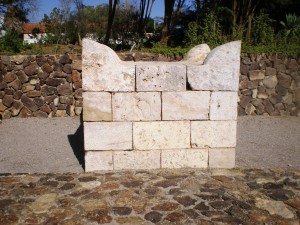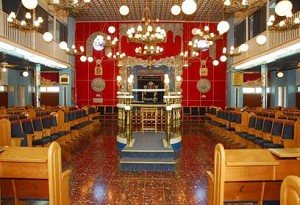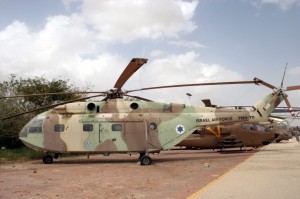It recently occurred to me that many of the locations mentioned in the Old Testament have become popular tourist sites. However, one place that is very accessible and is mentioned no less than thirty four times both in the bible and later writings, just doesn’t manage to draw in the crowds. I am talking about Be’er Sheva. I hope to convince you that there is actually plenty to do and see in the city and its environs, which today assumes the title capital of the Negev.
Be’er Sheva served as the southern limit of ancient Israel. “From Dan to Be’er Sheva” is quoted numerous times throughout the narrative of the Jewish people (Judges 20:1; 1 Samuel 3:20; etc.). As a number of different borders are given for the country, biblical historians posit that this was the actual physical area in which the tribes of Israel settled. The name of the city has two sources which are related in the book of Genesis. The first account (in Genesis 21:31) tells of the pact that was made there between Abraham and Avimelech, the king of nearby Gerar. The Hebrew word for “oath” is “sheva” and the treaty had been made after a dispute over the ownership of a well (“be’er” in Hebrew). Abraham plants a tamarisk tree on the spot to commemorate G-d’s name. In a later episode, his son Isaac has a similar experience and after another dispute over water rights makes a new covenant with Avimelech. On that same day Isaac’s servants discover water and he names the new well “Shiva”, “therefore the name of the city is Be’er Sheva to this day.” (Genesis 26:33)
You can visit the traditional spot of Abraham’s well which is about three metres wide and twenty six metres deep, the lower part of which is cut into the bedrock.
The site of the biblical city is not accessible and is considered to be located beneath the middle of the busy Be’er Sheva market area. However, four kilometers east of the modern city is Tel Sheva, a location which was settled from Canaanite times, through the Israelite, Roman, Byzantine, Crusader and Turkish periods. As you would expect, there are several layers to this much excavated site and some exciting discoveries.
As you enter the courtyard, one of the first items you see is a horned altar. Unlike the one that stood in the Temple in Jerusalem and against biblical instructions, it is made out of hewn stones, with the image of a snake engraved on one of them. It was likely used for burning incense, an idea which appears to be supported by the blackened top layer. The altar was actually found in pieces and was reconstructed by Ze’ev Herzog who excavated the site in 1976. Archeologists conclude it was probably destroyed during the reforms of King Hezekiah (mentioned in 2 Kings 18:22).
 During the First Temple Period, Be’er Sheva developed into an important pilgrimage site; it seems the ceremonies conducted there didn’t always conform to biblical traditions. The worshippers were influenced by foreign customs and that may well be why the prophets cautioned about what went on there: “Do not seek Bet El, nor go to Gilgal, nor cross over to Be’er Sheva…” (Amos 5:5). The Be’er Sheva altar is of great archeological significance as it gives us a rare insight into religious rituals carried out in a Judean city other than Jerusalem.
During the First Temple Period, Be’er Sheva developed into an important pilgrimage site; it seems the ceremonies conducted there didn’t always conform to biblical traditions. The worshippers were influenced by foreign customs and that may well be why the prophets cautioned about what went on there: “Do not seek Bet El, nor go to Gilgal, nor cross over to Be’er Sheva…” (Amos 5:5). The Be’er Sheva altar is of great archeological significance as it gives us a rare insight into religious rituals carried out in a Judean city other than Jerusalem.
The tel is thoroughly fortified, extremely well organized and has an impressive water system. However it is small, which suggests it was probably built for strategic purposes. Some historians propose it was the headquarters for the governor of Israelite southern Judea. It also has a very strange feature, a well outside the city gate, in addition to the internal water system. As we are talking about a desert location it is important to remember the huge significance of water. We saw earlier just how much trouble Abraham and Isaac had in asserting rights of ownership to their wells. It was only natural that fights between local tribes would continue throughout the ages. By positioning an accessible water source outside the city gates the Israelites managed to appease thirsty travellers and prevent them from entering the city to commandeer their water supply.
After exploring the tel it is worthwhile visiting some of the other attractions in the area too. One of them is located almost opposite the tel and that is the Lakiya Negev weaving project. Here you can meet local Bedouin women weaving traditional rugs, pillows and wall hangings. Their creations are spun on authentic spindles and looms which they make themselves. The cooperative, established about fifteen years ago, was set up in order to empower local Bedouin women and give them a chance to improve their socio-economic position. You can also enjoy some local culinary delicacies or go on a tour to visit the surrounding Bedouin villages and see what life is like there. This is currently a very hot topic, as the government is trying to come to an agreement with the Bedouin over land issues and persuade them to live in legally recognized villages and towns. Heated discussions are underway regarding land rights, as the Bedouin lived in the Negev and the area surrounding Be’er Sheva long before the state of Israel came into being. However, in most cases they do not have any record of ownership of the land and as tribal conflicts are rife, do not want to be pushed into living on lands that they claim belong to other clans. Conversely, the government is trying to stop the Bedouin from encroaching on greater amounts of land and is attempting to reach a mutually acceptable agreement. The process is anything but uncomplicated.
A short drive brings you to moshav Nevatim, home to a community of Jews originally from the Indian city of Kerala or Cochin. A visit to their heritage center and synagogue is a very rewarding experience. The Cochin Jews claim to be one of the oldest communities in the world, traditionally having reached the shores of India as traders during the reign of King Solomon. They have painstakingly recreated an exact copy of the beautiful synagogue they left behind in India when the whole community came on aliya in 1954. It serves as a regular functioning synagogue for the moshav. If arrangements are made in advance, one of the local families will host you for a genuine Cochin meal.
 Southwest of the city, in the Hatzerim air base is the Israeli air force museum. Standing on the tarmac are over 140 aeroplanes and helicopters. These include Israeli planes and missile launchers as well as enemy aeroplanes captured during battles, including Soviet Migs. There are displays of combat equipment and emergency gear and explanations about all of the aircraft, including useful instructions how to use the ejector seat. Both older and younger generations will find plenty of interest in this very exciting museum.
Southwest of the city, in the Hatzerim air base is the Israeli air force museum. Standing on the tarmac are over 140 aeroplanes and helicopters. These include Israeli planes and missile launchers as well as enemy aeroplanes captured during battles, including Soviet Migs. There are displays of combat equipment and emergency gear and explanations about all of the aircraft, including useful instructions how to use the ejector seat. Both older and younger generations will find plenty of interest in this very exciting museum.
Getting back to the main city, Thursday is when the market comes to town. In the past it was a genuine Bedouin market, whereas today it is more of a general open air market with a few authentic stalls with nargila pipes, darbuka drums and other traditional items. It is fun to wander around and soak up the atmosphere.
Be’er Sheva is definitely on the way to becoming a more popular tourist destination. It has a thriving university with the best student life in the country, the recently opened Negev museum of Art in an old Turkish building from Ottoman times, the Ilan Ramon Centre planetarium and stargazing experiences and a recent 30 million dollar donation to establish a science museum. So, if you find yourself wanting to explore somewhere off the traditional tourist track, you could do a lot worse than head south.
